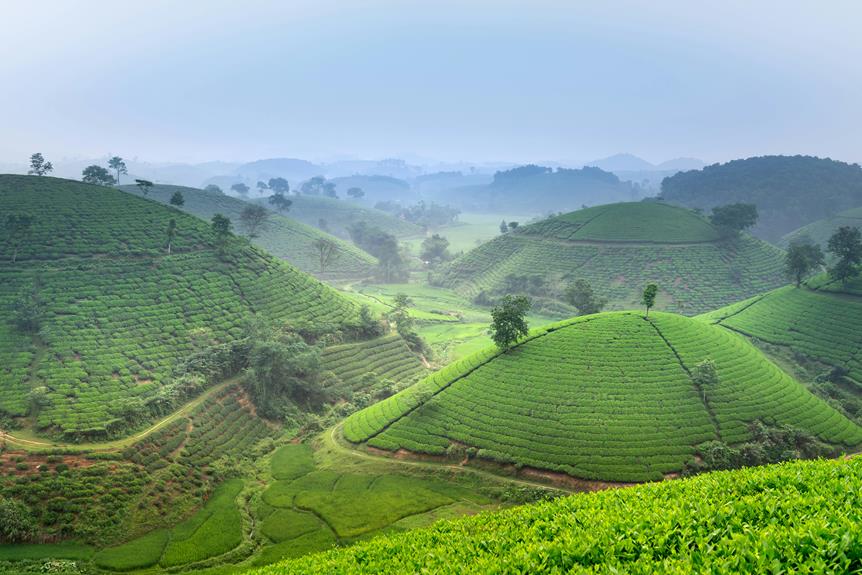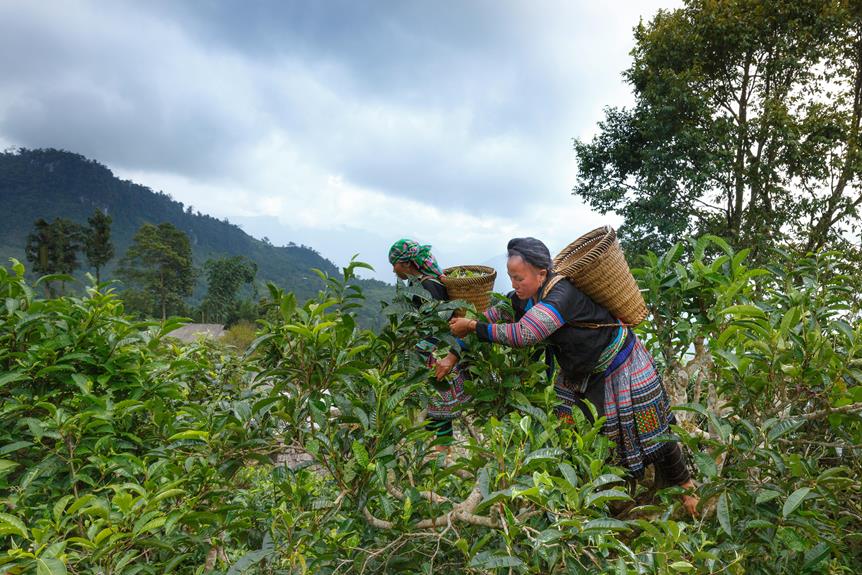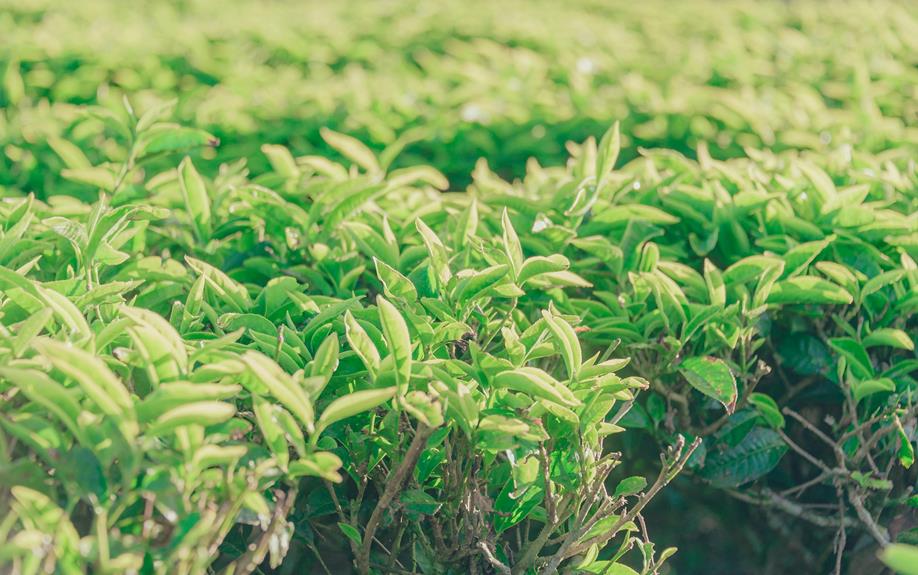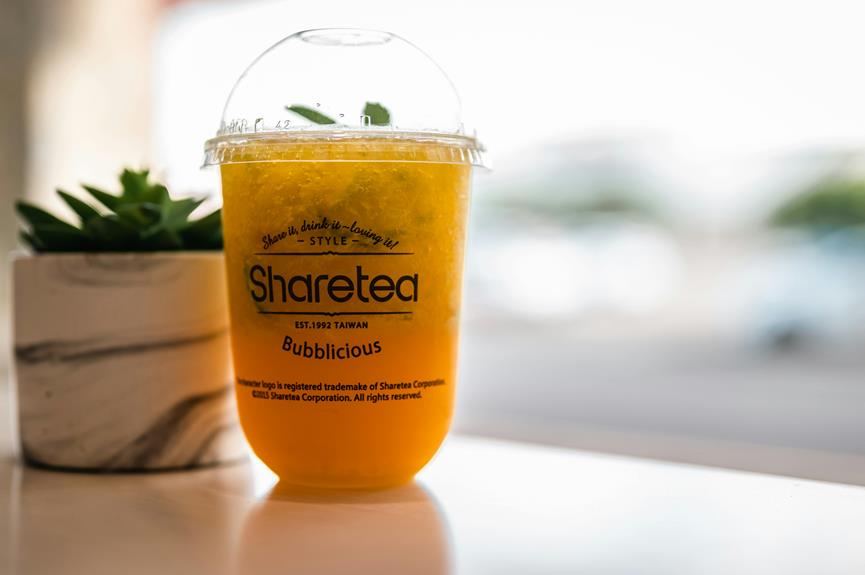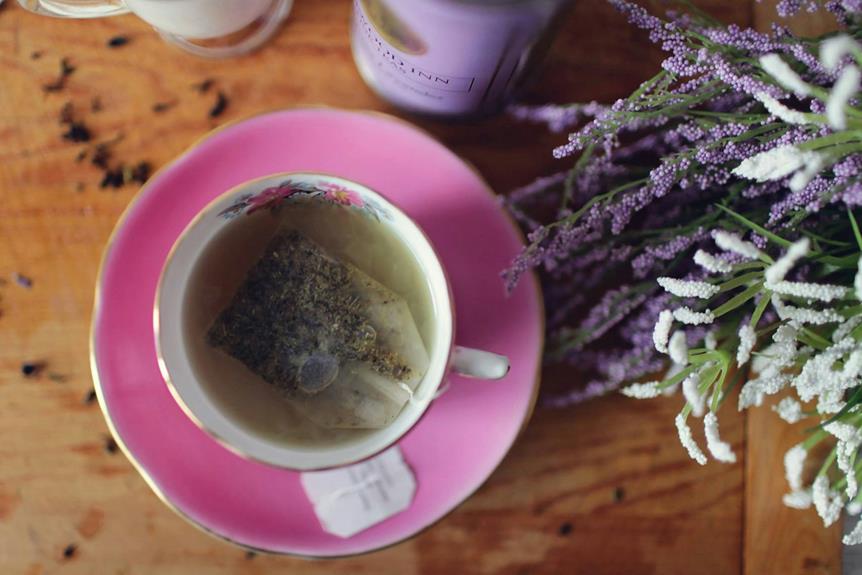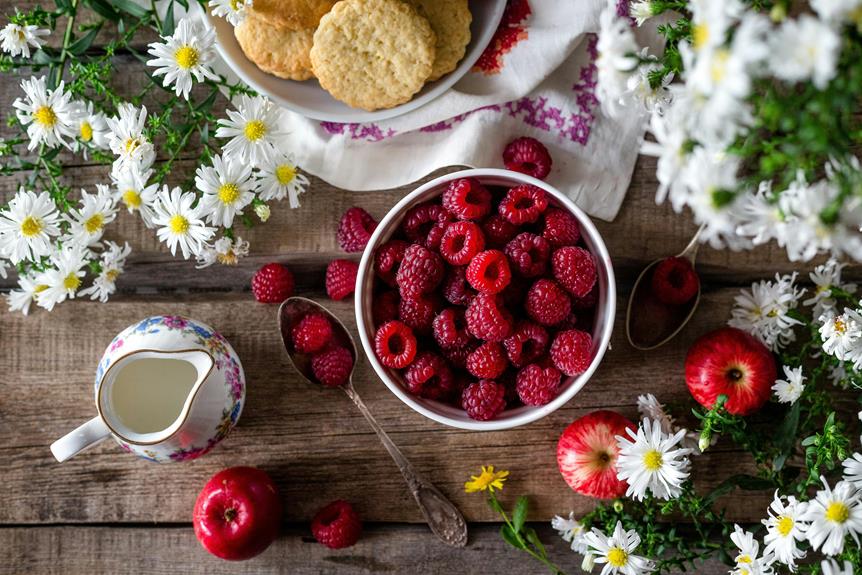You're curious about the difference between hand-picked and machine-harvested tea. As you explore premium tea options, you'll notice these two methods have distinct effects on flavor, aroma, and quality. Hand-picking guarantees only the youngest, most tender shoots are plucked, resulting in a more delicate flavor profile. Alternatively, you can say hand-picking sees to it that or hand-picking makes certain that only the youngest, most tender shoots are plucked. Machine harvesting, on the other hand, is faster and more efficient, ideal for large-scale plantations. But what does this mean for the tea in your cup? As you learn more about the intricacies of tea harvesting, you'll uncover the subtle nuances that set these methods apart.
Key Takeaways
- Hand-picking tea leaves ensures only the youngest, most tender shoots are plucked, resulting in a more delicate flavor profile.
- Machine harvesting allows for precise control, minimizing waste and maximizing output, making it ideal for large-scale tea plantations.
- Hand-picked teas tend to have slower enzyme reactions, preserving natural antioxidants and flavor compounds, while machine-harvested teas experience faster reactions.
- The cost difference between hand-picked and machine-harvested teas can be significant, with machine-harvested teas often priced lower and making premium tea more accessible.
- Quality control measures, such as farm protocols and regulatory standards, guarantee the harvested tea leaves meet the desired standards regardless of the harvesting method.
The Art of Hand-Picking Tea
As you step into the lush tea gardens, you're met with the serene sight of skilled tea pluckers carefully selecting the finest leaves, their nimble fingers dancing across the bushes to craft the perfect blend.
This traditional method of tea harvesting is an art form that requires precision, patience, and a deep understanding of the tea plants. For centuries, tea traditions have been passed down through generations, with skilled labor being the backbone of this ancient craft.
Hand-picking tea leaves guarantees that only the youngest, most tender shoots are plucked, resulting in a more delicate and complex flavor profile.
The skilled tea pluckers work tirelessly to select the perfect leaves, often picking only the top two leaves and the bud from each stem.
This labor-intensive process requires a great deal of attention to detail, as the quality of the tea leaves directly affects the final product. The tea traditions upheld by these skilled workers are a living embodiment of the value placed on quality and craftsmanship in the tea industry.
As you watch the tea pluckers at work, you can't help but appreciate the dedication and expertise that goes into creating the perfect cup of tea.
Machine Harvesting: Speed and Efficiency
You step into the modern tea harvesting facility, where the hum of machinery replaces the gentle rustle of leaves, and rows of mechanical arms efficiently strip the tea bushes of their leaves in a fraction of the time it takes skilled hand-pickers.
This is machine harvesting, where speed and efficiency take center stage. With advanced crop monitoring systems, tea farmers can track the ideal harvest time, ensuring peak yields.
Yield optimization is key, and machine harvesting allows for precise control over the harvesting process, minimizing waste and maximizing output.
As you watch the machines work, you notice how they can cover vast areas quickly, making them ideal for large-scale tea plantations.
The mechanical arms are designed to mimic the gentle touch of human hands, yet they can harvest up to 10 times faster.
This increased efficiency means tea farmers can respond quickly to changes in weather or market demand, giving them a competitive edge.
With machine harvesting, the focus shifts from labor-intensive hand-picking to high-tech precision, revolutionizing the way tea is harvested and produced.
Quality Control in Tea Harvesting
While machine harvesting excels in respect to speed and efficiency, it's the quality control measures that ultimately guarantee the harvested tea leaves meet the desired standards.
As you explore the world of tea harvesting, you'll realize that quality control is vital in maintaining the final product is of high quality.
This is where farm protocols come into play. Tea farms have established protocols to monitor and control every stage of the harvesting process, from leaf selection to processing.
These protocols are designed to meet regulatory standards, which vary depending on the region and type of tea being produced. By adhering to these standards, tea farms can certify their products meet the required quality benchmarks.
You'll find that reputable tea farms take quality control seriously, regularly inspecting their facilities and processes to identify areas for improvement.
Impact on Tea Flavor and Aroma
Every harvest method, whether manual or machine-based, profoundly affects the flavor and aroma of the tea, with some methods better suited to preserve the delicate nuances of the tea leaves than others. As you explore the world of tea, you'll notice that the harvesting method can make a significant difference in the final product.
Some key factors are worth examining:
Enzyme reaction: Hand-picked teas tend to have a slower enzyme reaction, which helps preserve the tea's natural antioxidants and flavor compounds. Machine-harvested teas, on the other hand, can experience a faster enzyme reaction, leading to a more pronounced flavor.
Oxidation levels: Machine harvesting can lead to higher oxidation levels, resulting in a stronger, more bitter flavor. Hand-picked teas, with their more gentle handling, tend to have lower oxidation levels, yielding a smoother, more delicate taste.
Leaf damage: Machine harvesting can cause more leaf damage, leading to a higher risk of contamination and spoilage. Hand-picked teas, with their more careful handling, minimize leaf damage and guarantee a cleaner, fresher flavor.
Sorting and grading: Hand-picked teas are often sorted and graded more meticulously, resulting in a more consistent flavor and aroma. Machine-harvested teas may have more variability regarding quality and flavor.
Terroir expression: Hand-picked teas tend to better express the unique terroir of the tea garden, with more nuanced flavor notes and aromas. Machine-harvested teas may have a more uniform, but less complex, flavor profile.
Cost and Accessibility Comparison
While the flavor and aroma of hand-picked teas may be superior, machine harvesting offers significant cost savings that can make high-quality tea more accessible to a wider range of consumers.
As you explore the world of tea, you'll find that machine-harvested teas are often priced lower than their hand-picked counterparts. This price difference can be a game-changer for those who want to enjoy high-quality tea without breaking the bank.
In addition, the cost savings can help reduce economic inequality by making premium tea more affordable for people from all walks of life. In rural areas where tea is often the primary source of income, machine harvesting can also support rural development by increasing tea production and generating more revenue for local farmers.
Frequently Asked Questions
Can Tea Leaves Be Harvested at Night or Only During the Day?
You might wonder if tea leaves can be harvested under the moonlight or only during the day. While some farms adopt Twilight Picking, most tea leaves are picked during the day when the sun helps to dry and prepare them for processing.
How Do Weather Conditions Affect Tea Harvesting Methods?
You'll find that weather conditions greatly impact tea harvesting, as frost damage can ruin entire crops, and rainfall patterns influence yield quality; understanding these factors helps you determine the best time to harvest for ideal results.
Are Tea Harvesting Machines Environmentally Friendly?
You're probably wondering if tea harvesting machines are as eco-friendly as a saint, but let's get real – they're not perfect. While they boast impressive energy efficiency, their carbon footprint is still a concern, leaving room for improvement.
Can Hand-Picked Tea Be Processed by Machine Later On?
You're wondering if hand-picked tea can be processed by machine later on. Yes, it can! This hybrid approach balances the cost benefit of machine processing with the labor skill required for hand-picking, offering a premium product at a lower cost.
Do Organic Tea Farms Use Different Harvesting Methods?
You'll find that organic tea farms often prioritize farm culture, adhering to certification standards that promote sustainable practices. While some may use machine harvesting, many opt for hand-picking to preserve quality and minimize environmental impact.
Conclusion
You've now got a better grasp of the differences between hand-picked and machine-harvested tea.
Hand-picking guarantees a more meticulous and labor-intensive process, machine harvesting prioritizes speed and efficiency.
But did you know that Japan's renowned Sencha green tea is still mostly hand-picked, with some farms employing up to 100 workers to harvest just 1 hectare of land?
This attention to detail is what sets exceptional teas apart, and it's worth considering when selecting your next cup.
